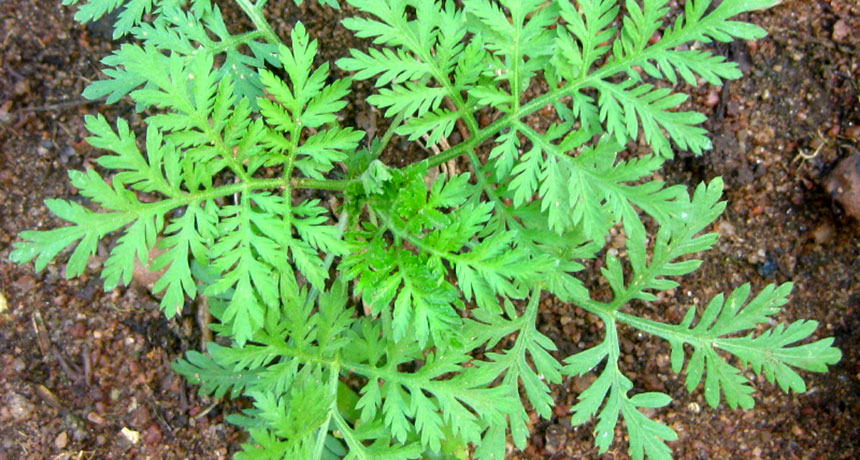Genetically modified plant may boost supply of a powerful malaria drug

Genetic modifications to a plant that makes artemisinin, a key compound used in malaria drugs, more than tripled the amount of the ingredient naturally produced in leaves.
Previous attempts to genetically engineer Artemisia annua to increase the yield of artemisinin had failed. So Kexuan Tang, a plant scientist at Shanghai Jiao Tong University, and colleagues determined A. annua’s entire genetic instruction book and identified three genes crucial to artemisinin production. Genetic modifications to increase the activity of these genes boosted the artemisinin level in leaves from 0.1–1 percent of their dry weight to 3.2 percent, the researchers report April 24 in Molecular Plant.
Malaria kills about 440,000 people worldwide every year. The scientists hope to save lives by increasing and stabilizing the global supply of artemisinin, which has been in shortage due to unstable supply, Tang says. Seeds of these modified plants have been shipped to Madagascar, which grows the most A. annua in Africa, as part of a field trial.
“This is a milestone paper for artemisinin,” says Akhil Vaidya, an immunologist at Drexel University in Philadelphia who was not involved in the research. Artemisinin was discovered by Chinese chemist Youyou Tu in 1972, as she was investigating thousands of traditional Chinese remedies. The discovery, which has saved millions of lives, earned her the 2015 Nobel Prize in medicine (SN Online: 10/5/15).
Drug companies have used genetically modified yeast to produce semisynthetic artemisinin (SN: 5/4/13, p. 20), which is also effective against malaria. But artemisinin from plants is cheaper, Vaidya says. “Let the sun shine. Let the plants do their job,” he says.